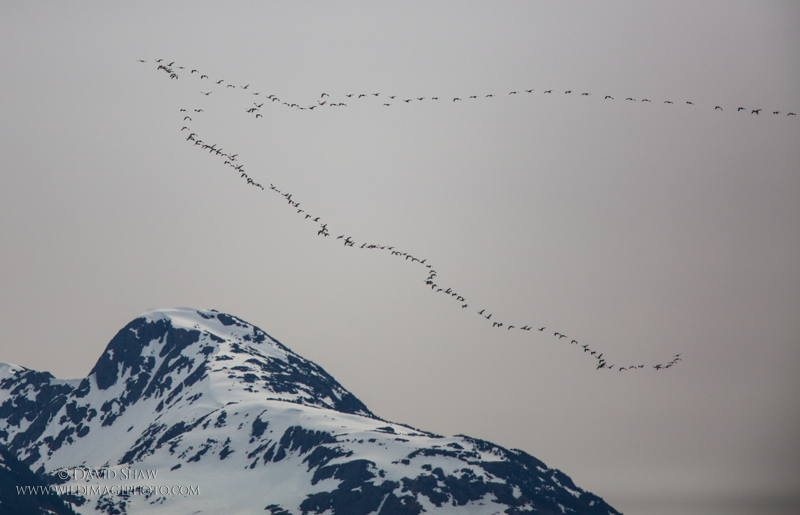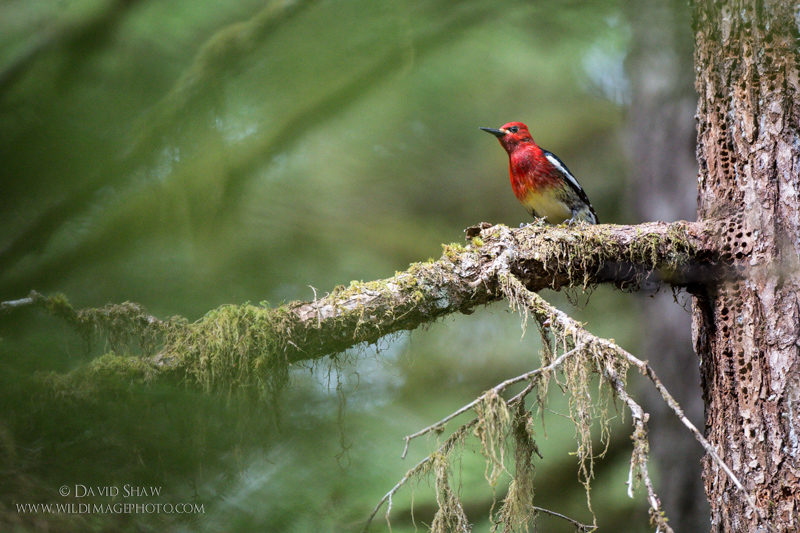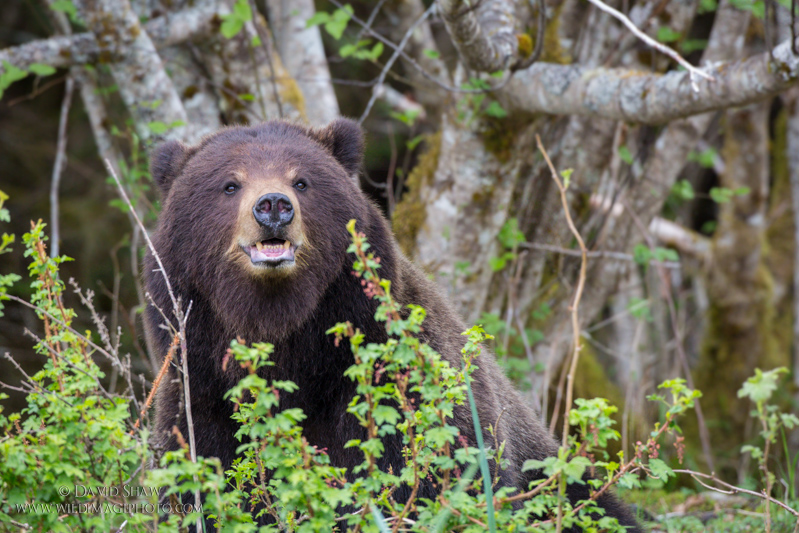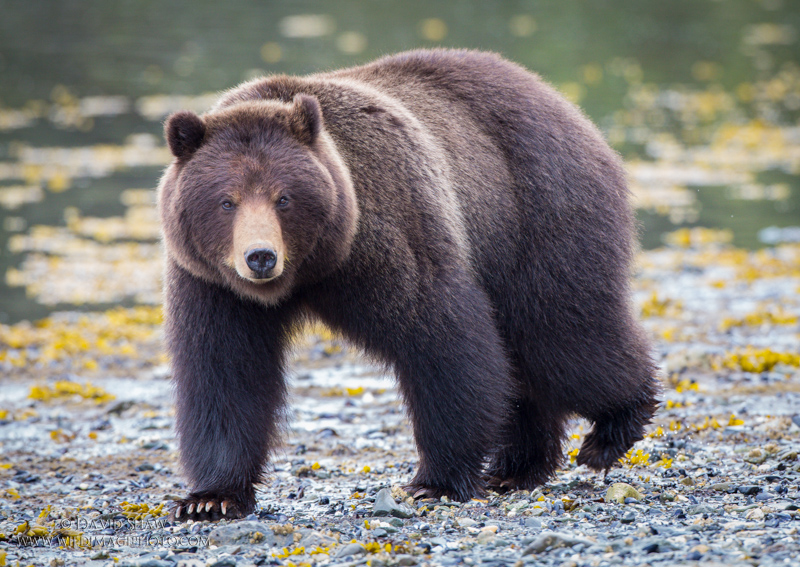
I spent the last few days around Juneau, Alaska’s capitol, for the spring board meeting of Audubon Alaska. Twice a year I join the rest of the board and staff to discuss wildlife and habitat conservation in the state. Audubon Alaska is an amazing organization, one that I strongly believe is the most effective conservation organization working in Alaska. The staff’s science-based approach and fierce dedication to Alaska’s wild places is inspiring. You really should support them too. Follow that link above to learn more and to send them some love.
Anyway, much of the four days I was down there were dedicated to meetings, but yesterday was an exception. One of the board members runs summer tours to Pack Creek on Admiralty Island, part of the Tongass National Forest. The Tongass’ environmental riches and wilderness (and many unfortunate threats) warrant a post (or book) of its own, but I’ll have to save that for another day. At any rate, for a steal, a group of a dozen of us flew out in float planes from Juneau about a half hour south and west of the city to arrive at the mouth of Pack Creek, a bear refuge. It’s early season, and the salmon have not yet reached the streams so the bears have been grazing the sedge meadows and clamming on the beaches. We hoped to encounter a few.
We landed on the inlet and taxied to the gravel beach where we unloaded for the day, then wandered down a quarter mile to the meadows at the mouth of the creek. There a big, dark, bruin was grazing some distance away. Apparently a new bear to the area, he was dubious of us and quickly moved off into the woods while we were still a few hundred meters away. Another bear, a female with a gimpy back leg was grazing closer to us, though not as close as my inner photographer would have liked.
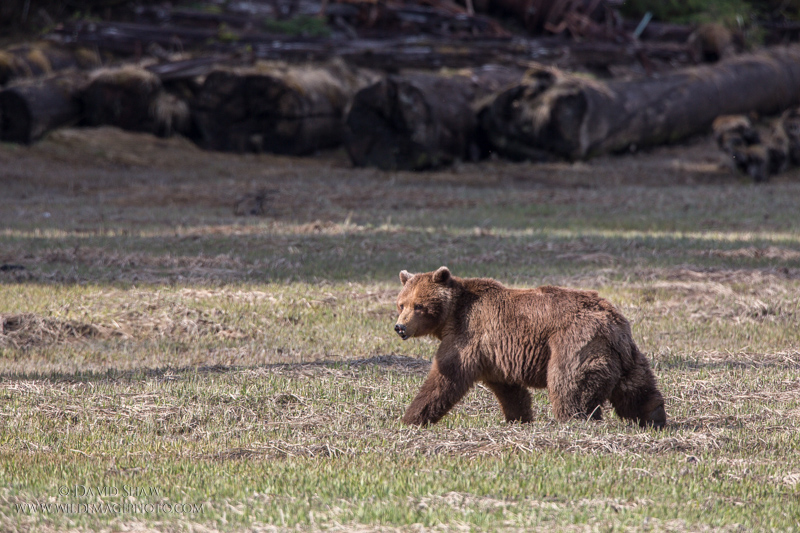
This is the best she allowed, as she ambled slowly away to seek a shady spot closer to the trees.
When both bears wandered off we turned our attention to other things, of which there were many. Shorebirds flitted up and down the beach, huge flocks of White-winged Scoters, and pairs of Marbled Murrelets dove off shore.
A flock of Snow Geese, over a hundred strong, passed over the mountains of the mainland across the inlet. I snapped a few images as their distant honking reached us over the water.
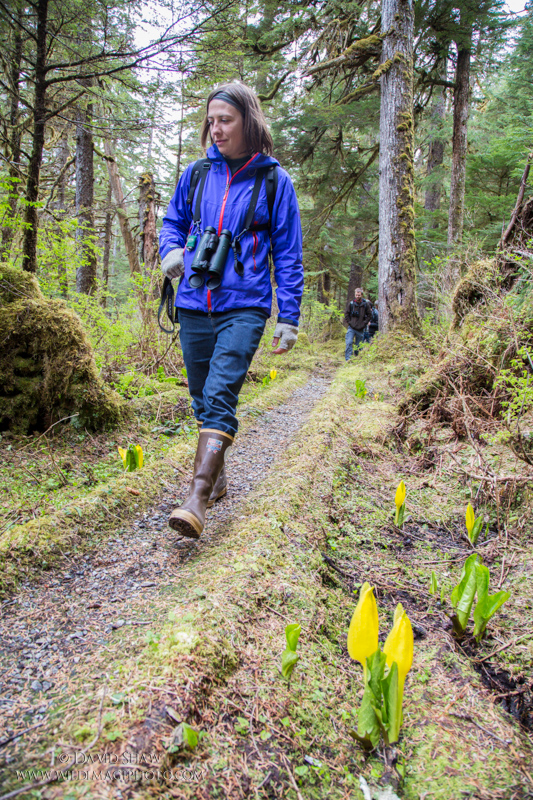
A few of us headed off to the woods where a winding forest service trail leads a bit over a mile to a view point over Pack Creek, where in the summer it’s possible to watch numerous bears fishing. The walk was through beautiful old-growth forest where Sitka Spruces and Western Hemlocks three to five feet in diameter towered over us and fresh, bright yellow, flowers of Skunk Cabbage lined the trail. The smell of the wet forest brought me immediately back to my college days exploring similar places in western Washington.
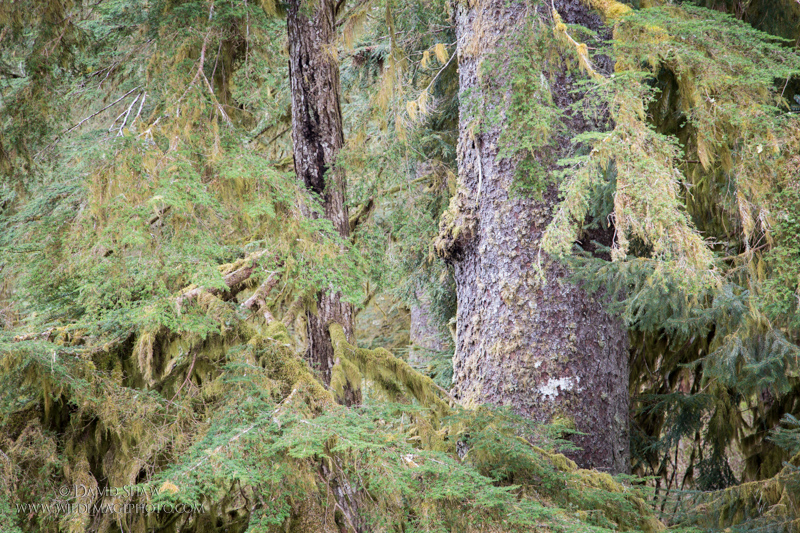
This stand of Sitka Spruces was near the creek and were some of the largest we saw. I do miss living among trees like this.
The forest was alive with spring bird song. Most species were still establishing territories, and didn’t seem to be too far into the nesting season. Pacific Wrens sang every hundred meters, Townsends Warblers, Varied and Hermit Thrushes and Pacific Slope Flycatchers filled out the retinue. But it was this Red-breasted Sapsucker that drew my photographic interest. My friend Milo Burcham and I both lugged our big lenses into the forest and took the opportunity to photograph this guy when he screeched and drummed just a few meters off the trail. Despite our patient efforts, he never came in close, but I still like the image above.
Back on the beach we headed once more up to the sedge meadow where we hoped the bears had returned. They hadn’t, but we wandered to the far side of the meadow just as the same gimpy sow we’d seen in the morning, appeared from the woods and grazed 100m out in the meadow. I made some images, but the sun-warmed grasses were raising a bit of heat shimmer and all my images came out just a bit soft.
The planes were due to return all too soon, so we packed up and returned to the beach where another bear, a stunning dark sow, was spotted some distance down the beach. I popped a few photos as a record, but mostly just bemoaned that we had to leave just as the bears seemed to be appearing.

Yet the bear headed our way, walking at a steady pace down the beach toward us. I grabbed my camera and a few of us scurried down to a good location a bit lower on the beach. She was still several hundred meters away, but we clustered in a tight group and waited as she moved toward us. There was never any concern. These bears are well socialized to people, and she was approaching of her own free will, never showing even the slightest aggression.
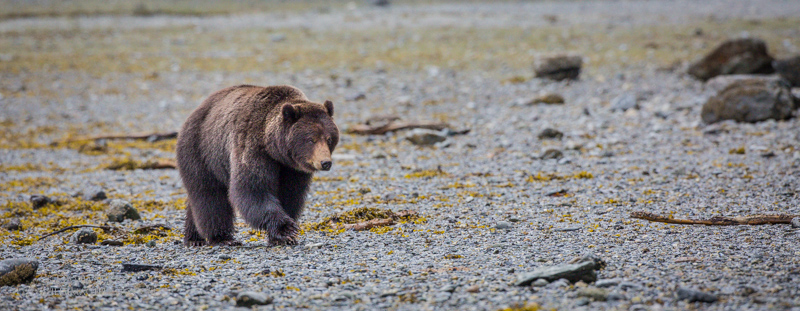
On she came and I started shooting enthusiastically when she was 100m down the beach expecting, that at any moment, she would turn to the woods.
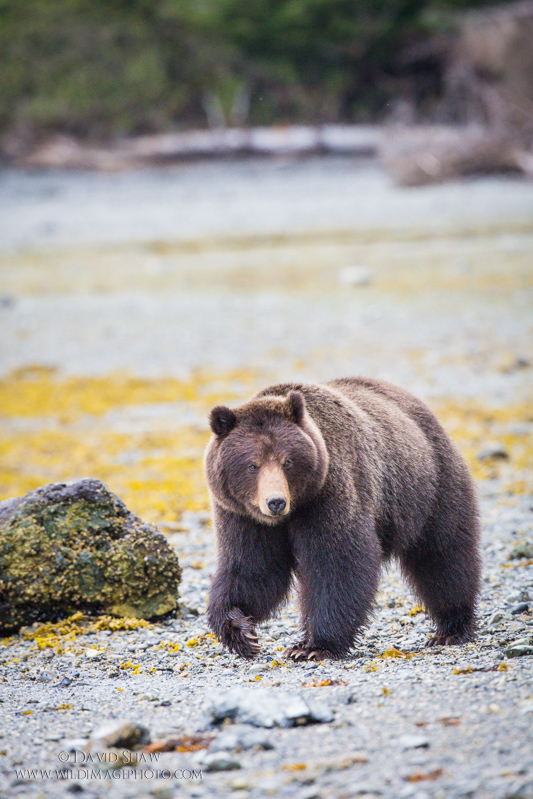
She didn’t.
Instead she walked down to the water where the tide was descending quickly down the beach. Camera shutters popped and we alternated between gasps of awe and utter silence. During the moments of quiet, the crunch of the bear’s claws scraping across barnacle-clad beach stones could be heard as she approached.
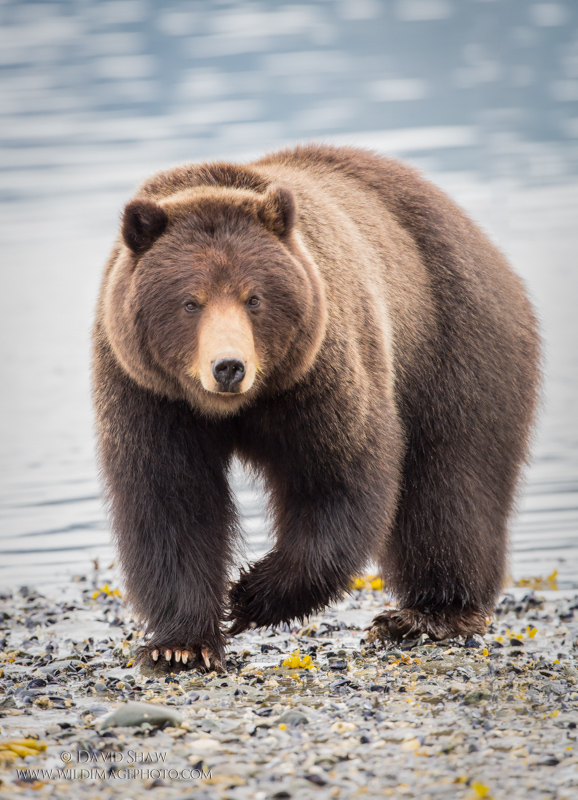
On she came, diverging only enough to pass below us at the water line. She was mildly curious, stopping to give us a skeptical look as moved past. Just after I made the image above, I lowered the camera from my eye for a moment and was surprised at how close the bear was. I’d been watching her through the view-finder where my 500mm greatly reduced my perceived distance to her. I expected her to seem some distance away to the naked eye, but she was right there, 10m away. I exclaimed quietly “Wow, she’s really close.” Later, the rest of the group had a good laugh about that statement of the obvious. (Reminder to self, next time lower the camera from time to time. Not just from caution, but to experience the moment outside the photographic frame.)
The bear passed around us and veered toward the woods where she paused to nibble on the fresh grass, while keeping an eye on us. My final images of her, including the one above, are perhaps my favorite as she eyed me (and I eyed her) over the brambles.
Each time I’ve had such an encounter with a bear, I’ve felt incredibly lucky. Bears have an undeserved reputation for aggression. Don’t get me wrong, they are to be taken seriously, and there are rules to be followed, but encounters like this are not dangerous for viewers or bears. Above all, this was a rare opportunity to share a moment with a big, wild, predator. All of it on the bear’s terms. Had she wanted, she could have wandered off at any moment. At the slightest hint of aggression from her, we would have backed away. Knowing bear behavior is vital, and among our group we had guides and biologists. Not once, was I even the slightest bit afraid.
She approached. We watched and photographed. She was beautiful. We were awestruck. She behaved as wild bears should. I prayed that her wildness and that of the Tongass’ other bears would continue in these uncertain times.
Until next time bears. Thanks.
Related posts:
Under bright blue skies and intense sun, huge mushing teams took to the...
Busy weekend. On Friday I flew down to Anchorage, bought a car, drove it ...
On my first raft trip as a kid, I stared with awe at the guide sitting at...

